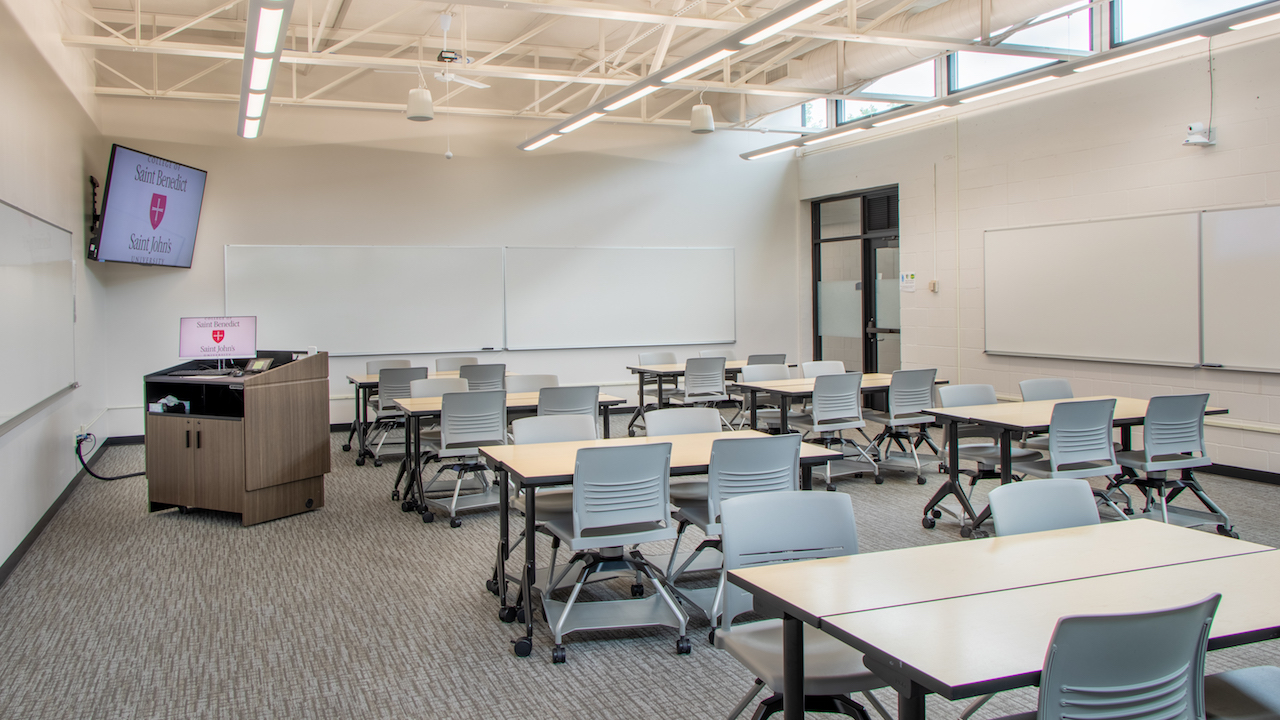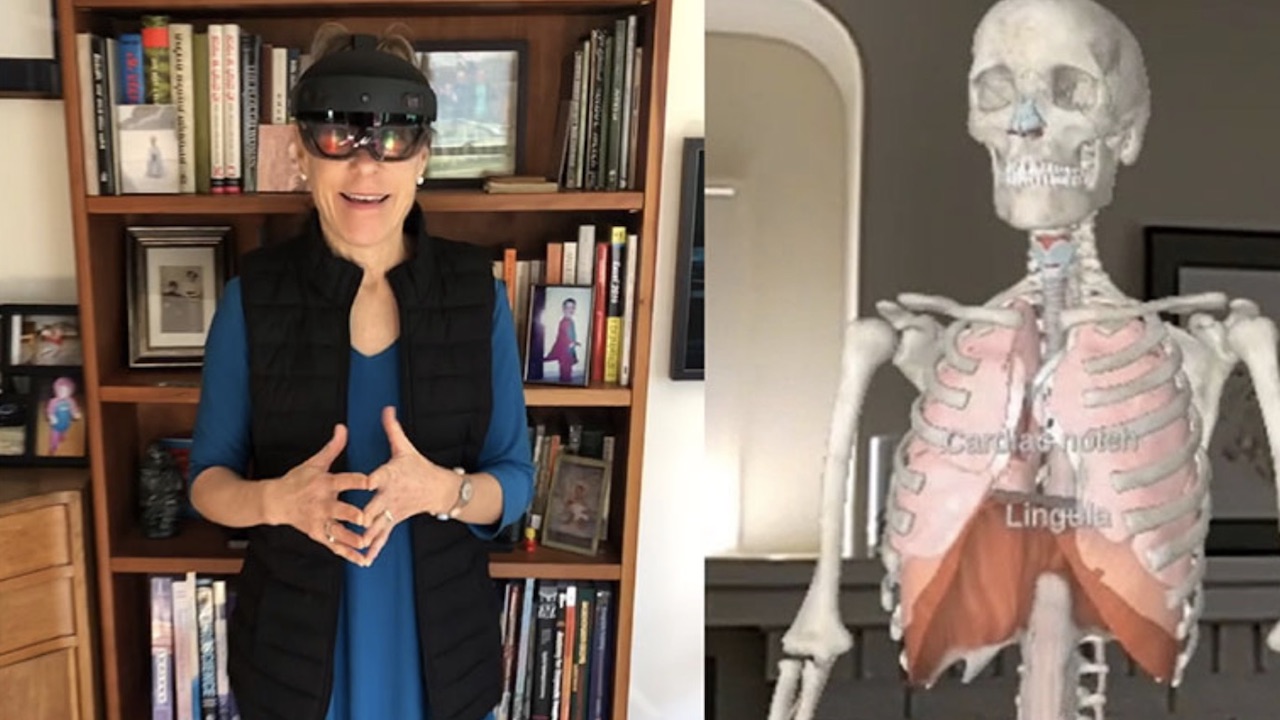In mid-March colleges and universities sent staff and students home to teach and learn. For some, it coincided with spring break, providing a bit of breathing room to prepare online coursework, as well as set up and train instructors for the inevitable when the mandate was extended to end of the semester.
As it quickly became clear that the COVID-19 pandemic was going have an impact through at least the end of 2020, every department within higher education institutions started to plan for nearly every scenario. Now, as the fall semester is upon us, how are institutions managing the return to campus, and what role is AV technology playing in the process?
Related: The Technology Manager's Guide to Transformative Classroom Solutions
Spaces Transformed
By June, Boston University had committed to a return to the residential educational experience for the fall semester. “We settled on a modality that we have branded Learn from Anywhere (LFA),” said Linda Jerrett, director of Learning And Event Technology Services at BU. LFA provides students with a mixture of an in-class experience as well as offering the opportunity to attend remotely. “Remote can mean that the student could be in another country, in another state, but also the student could be remote elsewhere on campus,” Jerrett said.
Jerrett is quick to mention that the planning and implementation has been the most collaborative experience and an enormous undertaking by many departments and multiple individuals, as well as external partners. “Our space management team has gone through and applied a six-foot spacing de-densification grid for the buildings on campus, on three campuses, and it will require furniture changes in hundreds of rooms to maximize the capacities,” she said. “The scheduling group in our registrar's offices also has a huge task ahead because they will be managing classroom rotations, because the classroom that used to hold 20 now holds eight. So we have to move them around.”
Part of the LFA process was to work with the schools to determine what existing technologies could be leveraged in each of the classrooms. “Our solutions are pretty straightforward,” Jerrett said. “We have back-of-the-room cameras, ceiling microphones for student discussion and faculty, input in the front of the room, and if there is an existing lecture capture, we'll be putting in a bridge so that we can switch the video and the audio signals between Echo360 and Zoom.” Given that faculty and students will be wearing masks, special consideration needed to go into speech intelligibility.
Related: BU’s Learning Tech Team Discusses Their Move to Virtual Classrooms
To augment remote participation needs, three different types of mobile carts have been created. “The mobile carts are going to be great, so that students can have some remote participation in sciences and in engineering labs,” Jerrett said. “Some of them will have a laptop with a webcam on an articulating arm with a ring light, others will have iPads on a pole that can be put into the corners of fine arts classes.”
The mobile cart solution might seem like a simple arrangement, but a great deal of thought has gone into the design. “Each of them needs to be able to join a Zoom meeting, which means we need to have an identity in an account that can be invited to a meeting," Jerrett said, “And then how is that going to tie into the flat panel display? Are there audio concerns with picking up? So, do we need to have microphone?”
Technology challenges in the classrooms were fairly straightforward compared to transforming spaces not designed for teaching into classrooms. “The truth is that the auditorium's capacity was impacted more than the smaller rooms,” Jerrett said. “I have one room that went from 230 students down to 32 students.”
When the number of students to a room needs to be minimized and there aren’t any more classrooms, creativity is in order. Ballrooms and auditoriums are being turned into classrooms. “We have about 58 nontraditional spaces that will be tagged in for academic use,” Jerrett said. The team looked at all spaces but had to rule out some because the acoustics would never work. “Then there were other spaces that were so great that we just had to figure out what to do to get it.”
Related: BU's Learning & Event Technology Services Team Fosters Student Success
Two ballrooms will be used for classes. “We already have semi-permanent installs in these and we'll build upon that,” Jerrett said. Then there’s the chapel. “How do you put a screen in the front of the chapel where students can see it from the balcony, without violating the space?”
Allocating a technology budget for nontraditional spaces that will only be used in the short-term isn’t fiscally possible. “We have to be creative, the answer isn't always ‘Buy it,’” Jerrett said. “We're working with our integration partner Ambient for event rental.” Given that the AV equipment at many event rental companies is sitting idle, this was a good solution for both parties.
“If this were an interview about my team, I would be going on and on about just how blessed and appreciative I am of them, because they have really pivoted,” Jerrett said.
Mixed Reality Times
Attracting students from around the world, Cleveland-based Case Western Reserve University’s (CWRU) School of Medicine is one of the top-25 medical schools in the country. In summer 2019, CWRU and Cleveland Clinic opened the Health Education Campus, a 477,000-square-foot state-of-the-art facility. Breaking from a tradition that dates back to the 18th century, it was decided that anatomy classes would not be taught with real human cadavers, but instead with anatomized tables and mixed reality.
Like many universities, CWRU has prepared for in-person and remote learning. “We're also preparing for dual-delivery, which could be synchronous or asynchronous teaching,” said Sue Workman, CWRU’s vice president, University Technology/CIO. And like many other universities, classrooms were outfitted with additional microphones and recording equipment; but carrying out labs proved nearly impossible—for some.
In 2019, already having worked closely with Microsoft for five years, CWRU began teaching its anatomy classes using immersive mixed reality delivered through HoloLens devices. With the exception of a few displays, classes are conducted in a large, mostly empty room where students and faculty stand, interacting via the HoloLens experience. “It was working really well,” Workman said. “Students were learning faster, and had greater retention.”
In March, when all schools had to go remote, the anatomy lab got creative. “We ended up acquiring and borrowing 185 HoloLenses and mailed them to all of the student’s homes, so they could continue to learn,” Workman said. “If this had been set up as a cadaver lab, they would not be able to continue to dissect or continue to do anything. You can't ship that to their homes.”
Students are now virtually dissecting the human anatomy in their living room. “Some students said they learned better that way because having the HoloLens at home meant they could review and have more time to explore,” Workman said.
Had the learn-from-home mandate not happened, Workman contends that “culturally, it would have been hard to convince a faculty member to teach an anatomy class remotely.” Most everyone would agree that in-person learning has the greatest impact and benefit for students. “But what we've found all across the university, but especially in this case, is that we can teach this way,” Workman said. “Our students can learn this way.”
AV Connects
Until the pandemic, a point of pride for the College of Saint Benedict and Saint John’s University (CSBSJU) in St. Joseph and Collegeville, MN was that classes were solely taught in person and on campus.
CSBSJU’s CIO, Casey Gordon, and classroom support AV manager Adam Bauer, knew during the previous spring semester that they’d need to come up with a permanent solution that would better engage their students who take part in the hybrid learning model.
Students and faculty were surveyed to understand what went well and what were opportunities for improvement in the spring semester when everyone was sent home.

“We knew from the survey that the students and our faculty missed the in-person component,” Gordon said. “Our goal was to figure out how to use this technology to allow for some in-person instruction and combine that with some remote, because we also know some students and faculty are part of a vulnerable population and would need to be remote this fall.”
They previously used Vaddio videoconferencing cameras and microphones in a few conference rooms and were happy with the quality and ease of use of those systems. During the initial meeting with their AV integrator, EPA Audio Visual, they laid out their system requirements and then brainstormed options. “We told EPA that the system needed to be cost effective, it needed to be quick to install, and needed to be consistent for our faculty to know how to use. If they’re teaching in this classroom one day and then they’re teaching in a different classroom another day, they need to know how to use it,” Bauer said. “We can’t keep retraining folks and so keeping the microphones and cameras consistent is essential.”
They also needed the solution to be simple to install so their small on-campus AV team could outfit the 110 classrooms in less than six weeks—in time for the fall semester.
One of the most important factors for Gordon was that the colleges had to deliver the best possible experience for students on the far end, and have video that makes them feel like they are sitting alongside the rest of the class. What they ultimately standardized on was one EasyIP 10 PTZ camera, two CeilingMIC microphones, one EasyIP Decoder to connect the audio and video with Zoom videoconferencing software, and one Luxul AMS-1208P to power and connect the devices. The EasyIP Decoder is mounted into every lectern and connects to the faculty laptop via a USB 3.0 cable to act as the default audio and video source for the Zoom session. The system is plug-and-play with no drivers or additional applications to install.
For a small on-campus AV team, adding over 100 PTZ cameras and 200 microphones could be a daunting support task, but Bauer is confident his team can handle the support and training on the new system. Vaddio’s EasyIP systems are simple to manage for Bauer’s team using the included Vaddio Deployment Tool application. Having the ability to remotely view streaming quality, see device status, and troubleshoot basic issues like someone mistakenly muting the video or microphone is invaluable as every class will now employ the equipment.
“We wrapped up the installations almost a month ahead of time, and we couldn’t have done it without EPA,” Bauer said. “To go through and say from the time we started talking to the time we’re done was three months. It’s incredible.”
“I think one of the major reasons that leadership was willing to invest in this technology so quickly is not just that it's relevant for the pandemic, but it will strategically set us up in terms of being able to stream or record any class in the future,” Gordon said. “It really is a strategic decision. It's not just an emergency response and that's one of the reasons we were able to make that call so quickly.”

